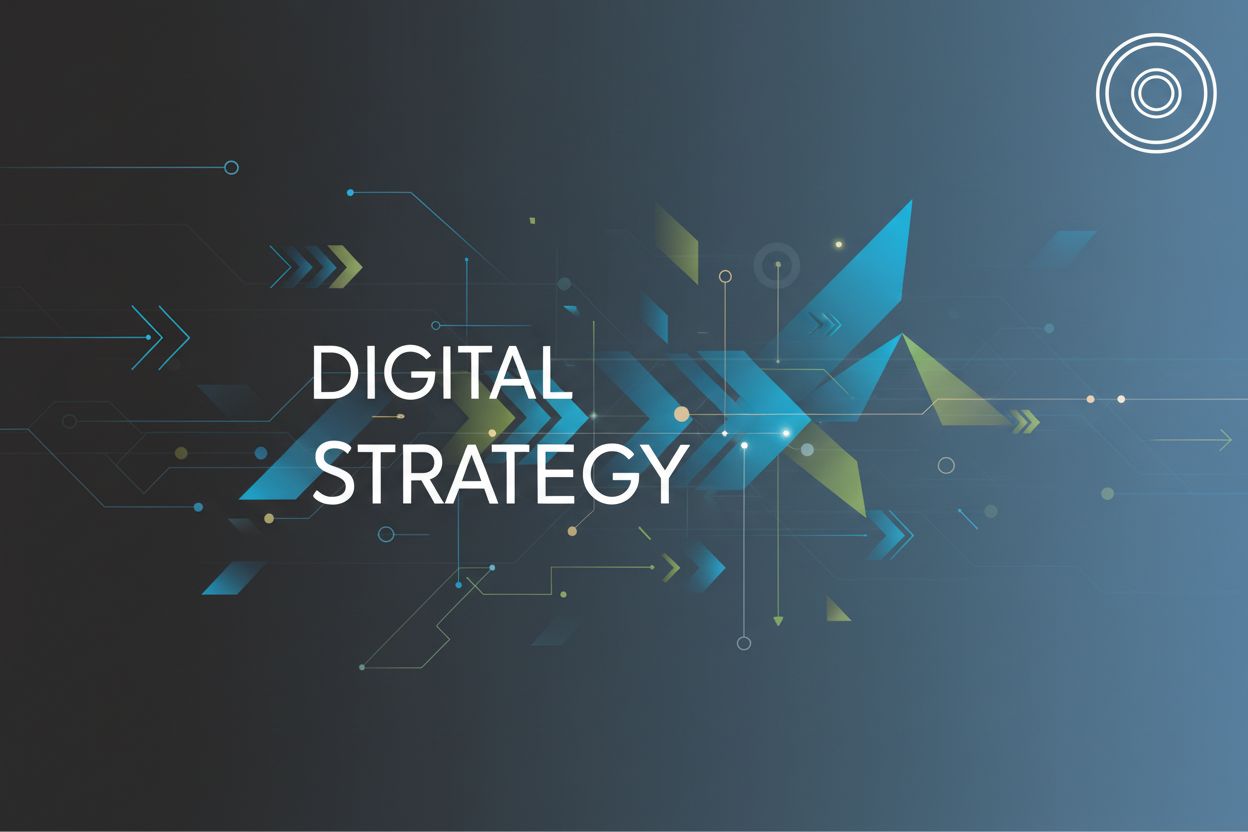Top 10 Native Advertising Techniques for B2B Marketing
TL;DR
Understanding Native Advertising in the B2B Context
Okay, so native advertising in the b2b world... it's kinda like that friend who always knows the perfect thing to say, right? What if your ads could feel less like ads, and more like, well, actual content that folks wanna see?
Native advertising, simply put, is advertising that blends in with the surrounding content. It's designed to not disrupt the user experience and should feel natural within the platform it lives.
- Think sponsored articles on industry websites, where the content is relevant and useful, not just a blatant sales pitch. For instance, a cybersecurity firm might publish an article on a tech blog about the latest data breach prevention techniques, subtly showcasing their expertise.
- Or maybe you’ve seen those promoted posts on LinkedIn? That's another example. A financial services company could share insights on managing risk in volatile markets, positioning themselves as thought leaders.
- It ain't your typical banner ad screaming "BUY NOW!" you know? It's about providing value first, selling later.
B2B marketers should care about native advertising because people are tired of being constantly sold to.
- Building Trust: Native ads let you show off your knowledge and build credibility. It's like, "Hey, we know our stuff, and we're here to help."
- Targeted Reach: You're reaching folks who are already interested in what you're offering, because they're consuming content related to your industry.
- Overcoming Ad Fatigue: People are tuning out traditional ads. Native ads? They slip right in.
Native advertising aligns with the different stages of the b2b buyer's journey. (10 Native Advertising Strategies for B2B Marketers - Madison Logic)
- Awareness: Use blog posts or articles to introduce a problem and your solution.
- Consideration: Offer whitepapers or ebooks that compare different approaches, subtly highlighting your strengths.
- Decision: Share case studies or testimonials that prove your value.
Here are some effective techniques for B2B native advertising:
Technique 1: Sponsored Content on Industry Blogs
Okay, so you wanna get your B2B content seen? Sponsored content on industry blogs can be a real game-changer, y'know? It's all about finding the right fit.
- Niche is key: Don't just go for the biggest blogs, find the ones where your target audience hangs out, alright? Think super-specific. Like, if you're selling HR software, a general business blog ain't gonna cut it. Go for the one that's all about "HR Tech Innovations" or somethin'.
- Value, value, value: Nobody wants to read a blatant ad. Make it genuinely helpful. A financial firm could sponsor a post on "3 Common Tax Mistakes Small Businesses Make" and, like, subtly mention their services.
- Match the vibe: If the blog is all quirky and informal, don't submit a super-stuffy, corporate piece. Blend in! It's gotta feel natural, or people will see right through it.
It is crucial to make sure the blog or site is credible before pursuing this technique. Here's how to tell:
* Audience Engagement: Look for active comment sections and signs of genuine discussion, not just bots.
* Editorial Standards: Does the site have a clear editorial policy? Are there bylines and author bios?
* Industry Reputation: What do other professionals in your field say about the blog? Is it considered a go-to resource?
* Red Flags: Be wary of sites with excessive pop-ups, poor grammar, or a clear lack of original thought.
(What Are Credible Sources & How to Spot Them | Examples - Scribbr)
Technique 2: In-Feed Ads on LinkedIn
Okay, so LinkedIn in-feed ads... think of it as whispering in the right ears at the right time, y'know? It can be super effective if you do it right.
- laser targeting: You can get really specific with who sees your ads. Job title, industry, company size – LinkedIn's got it all. Like, wanna reach just the cisos at fortune 500 healthcare companies? you probably can.
- retargeting is your friend: Ever notice how ads seem to follow you around the internet? That's retargeting, and it works great on linkedin. Hit 'em again if they visited your site.
- custom audiences: Upload your own list of contacts, and LinkedIn will find 'em... and show them your ad. It's kinda spooky, but it works.
Technique 3: Content Recommendation Platforms
Content recommendation platforms, ever notice those "Recommended for You" sections at the bottom of articles? Turns out, they're a goldmine for B2B!
- Wider Reach: Platforms like Taboola, Outbrain, and even some publisher-specific networks put your content on tons of sites. You're not just preaching to your choir, you're finding new peeps. Think of it like casting a wider net, but with slightly better bait.
- Native Feel: Ads look like related articles, so they're less "in your face" than banner ads. Someone selling cloud services could have an article on "5 Ways to Optimize Your Cloud Spend" show up next to a piece about data security. These platforms use algorithms to match your content to user interests based on their browsing history and the context of the page they're on.
- Headline is key: Gotta make 'em click! Use numbers, ask questions, promise something useful, y'know?
Technique 4: Influencer Marketing with Industry Experts
Ever wonder how some B2B brands seem to have that "it" factor? Well, a lot of times it's 'cause they're buddy-buddy with the right industry experts, you know? Influencer marketing ain't just for makeup tutorials!
- Find Your Tribe: Look for influencers who actually know their stuff in your niche. Like, if you're selling, uh, fancy accounting software, don't go for the general business guru. Find the CPA who's got a killer blog and a devoted following.
- Content is Still King: Don't just ask them to shout you out. Collaborate on actual content. This could be co-authored whitepapers, joint research reports, sponsored guest posts on their blog, or even joint webinars where they present alongside your team. A supply chain company could partner with a logistics expert to discuss the future of shipping, say?
- Social Proof Matters: Get them to share your content on social media, of course. A genuine recommendation from a trusted voice can go a long way.
Influencer marketing can really boost you up and make people see you as more credible in your industry. (20 Surprising Influencer Marketing Statistics)
Technique 5: Case Studies as Native Ads
Wanna show, not just tell? That's where case studies come in, right? But, like, nobody wants to read a dry company brag. How do you make 'em not feel like ads?
- Focus on the story, not the sale. Highlight the customer's journey, their pain points, and how they overcame 'em with your help.
- Quantifiable results are key. Use numbers to show impact, like "increased sales by 30%" or "reduced costs by 20%." People trust data, y'know?
- Platform matters! Tailor the case study to where it's being shared for best results. For example, shorten it for a social media post with a link, add more technical depth for a trade publication, or focus on specific pain points relevant to different buyer personas.
Technique 6: Native Video Advertising
Okay, so, native video advertising? It's not just slapping a commercial before a youtube video, alright? It's about making videos that fit where they're shown.
- Educational videos are gold: Think "how-to" guides or tutorials that solve a problem, not just push your product. A cybersecurity company could make a short video on spotting phishing scams, y'know?
- Demos that don't feel like demos: Skip the cheesy sales pitch, focus on showing how your product works and how it solves real problems. it's gotta be useful.
- Testimonials that are real: No fake smiles! Get actual customers to share their stories, and make sure it sounds like them.
Get those videos on the right platforms. For B2B, consider LinkedIn, industry-specific video platforms, and YouTube with its native ad formats. Optimize your videos for each platform – shorter, attention-grabbing intros for social, more detailed explanations for YouTube.
Technique 7: Interactive Content as Native Advertising
Interactive content as native advertising? Think quizzes, calculators, stuff that gets the user involved. It ain't just passive reading, you know?
- Quizzes and assessments: "What's your marketing automation maturity level?" questions can be super engaging. A marketing platform could then offer tailored advice based on the results, subtly showcasing how their product fits the bill.
- Calculators and configurators: A SaaS company could offer a ROI calculator that shows potential cost savings. People love to see numbers, especially when it benefits them, right?
- Interactive infographics: Ditch the static charts and graphs. Make 'em explorable! A healthcare provider could use an interactive infographic to explain complex medical procedures, making it easier to understand.
To effectively embed this content, consider placing it within relevant articles on your own site or partner blogs. Ensure the interactive element aligns with the surrounding content's tone and purpose, and use clear calls-to-action to encourage engagement.
Technique 8: Email Newsletter Sponsorships
Email newsletters, still a thing? Absolutely, especially in b2b! Sponsoring the right newsletter can put you right in front of a targeted audience.
- Find the Niche Newsletters: Don't just go for the ones with huge subscriber lists. Look for newsletters that cater specifically to your industry. A healthcare tech company, for example, would do well sponsoring a newsletter for hospital administrators, not a general business news roundup.
- Native-ize Your Ad: Don't go full-on sales pitch. Offer value. A financial services firm could provide a "tip of the week" related to tax planning. Key elements include a helpful, concise piece of advice, a subtle mention of your company's relevance, and a clear, non-intrusive call to action. Avoid overly promotional language or aggressive sales tactics.
- Exclusive Deals: Give newsletter subscribers a special discount or early access to a product. Makes 'em feel special, y'know?
Technique 9: Webinar Sponsorships
Webinar sponsorships... they're still a thing, right? Turns out, can be a sneaky good way to get your brand in front of the right eyeballs in the b2b world.
- Partner with the Pros: Sponsoring webinars hosted by reputable orgs in your industry is a solid move. You ain't gotta do all the heavy lifting, y'know?
- Content is Still King (and Queen): Don't just slap your logo on the slides and call it a day. Offer real value. Maybe a healthcare company offers a free guide on navigating new regulations. This guide can then naturally lead into a discussion of how the sponsor's software streamlines compliance, showing how the product addresses the challenges outlined in the guide.
- Targeted Audience, Ahoy: You're reaching folks who are already interested in the topic, which means they're way more likely to be, uh, receptive to your message. a retail analytics firm could sponsor a webinar on "future-proofing your brick and mortar store".
Technique 10: Participating in Industry Forums and Communities
Industry forums... they're like the digital water cooler, right? A place to learn, share, and, yeah, subtly promote your stuff. Just don't be that person who only shows up to sell.
- Be Helpful, Not Pushy: Answer questions, offer advice, and generally be a good citizen. A retail analytics firm could chime in on discussions about improving customer experience, y'know?
- Link Smart: When relevant, share links to your blog posts or case studies. If someone's asking about lead generation, a marketing automation company could share a post about their own method. Criteria for "smart" linking includes ensuring the linked content directly answers the question or adds value to the conversation, and avoiding over-linking or sharing irrelevant content that feels spammy.
- Build relationships: These forums are filled with potential partners, clients, and advocates. Engage with people, not just profiles.
Think of it as "give before you get." Coming up next, we'll discuss how to measure the success of your campaigns.
Measuring the Success of Your B2B Native Advertising Campaigns
Alright, so you've been putting out all this native advertising... but is it actually working? Don't just throw money at the wall and hope it sticks, you know?
- Website Traffic is Key: Are people clicking through? and more importantly, are they staying on your site? if your sponsored content on that industry blog isn't driving relevant traffic, something's wrong. Maybe you need to adjust your headlines or the content itself isn't engaging enough.
- Leads, Leads, Leads: Is your native advertising generating qualified leads? Like, are you getting contact info from people who are actually interested in your product or service? If a financial services firm is running a native ad campaign, are they seeing an uptick in requests for consultations?
- Conversion Rates: What percentage of those leads are turning into paying customers? This is where you see the real return on your investment. If you're getting tons of leads but nobody's buying, you need to figure out what's going on with your sales process.
- Brand Awareness: it's kinda hard to measure, but are more people talking about you? Are you seeing an increase in social media mentions or brand searches? Use tools like Google Analytics and social media analytics to track this. For example, in Google Analytics, track branded search queries (e.g., "your company name") under Acquisition > Search Console. On social media, monitor the volume and sentiment of brand mentions using tools like Brandwatch or Sprout Social.
Adapting to the data is critical. If somethings isn't working, you gotta tweak it.
So, yeah - keep an eye on those numbers, and don't be afraid to experiment and iterate!







